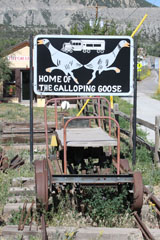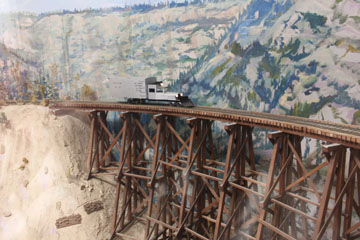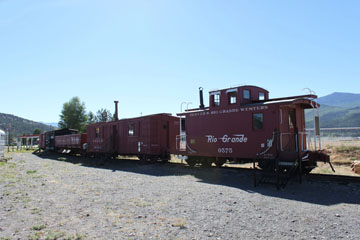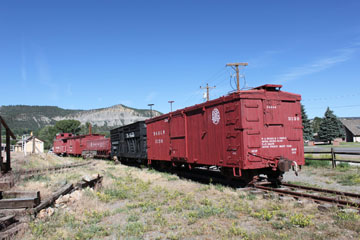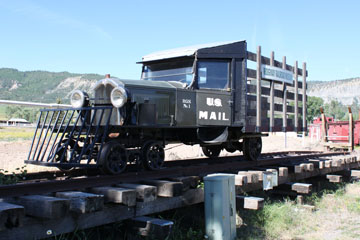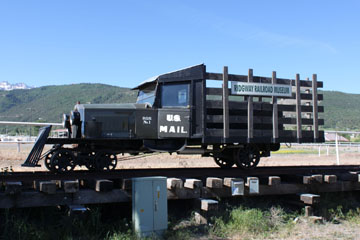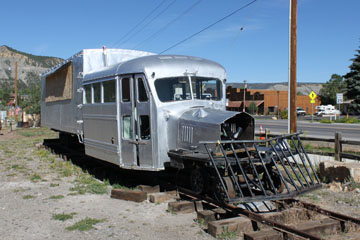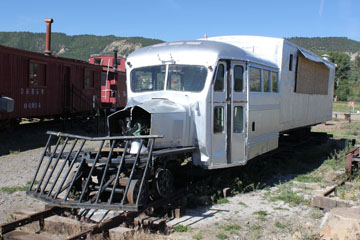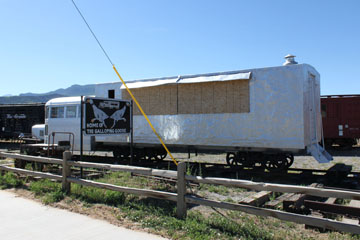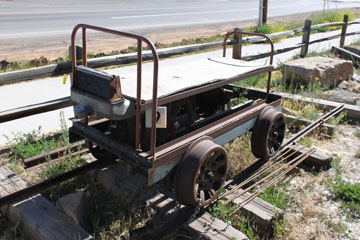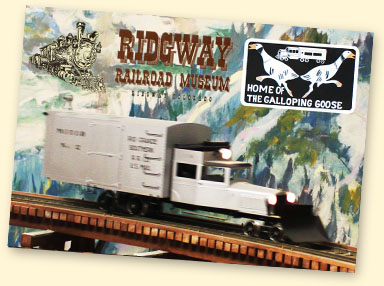

The Ridgway Railroad Museum is located at the junction of US Highway 550 and Colorado State Highway 62 in Ridgway, CO, about 85 miles south of Grand Junction. It is open every day from
1st June
- 30th September from 9.00 am to 4.00 pm. From 1st October until 31st May, it is open
Monday - Friday 10.00 am to 3.00 pm. There is no charge to visit the museum although donations are welcome.
Ridgway began as a railroad town. It was named for Denver & Rio Grande Railroad superintendent Robert M. Ridgway, who established the town in 1891. It is also known as the home of the Rio Grande Southern, founded in 1889 by Otto Mears. Construction of the 36" gauge RGS line began in 1890 north from Ridgway and south from Durango to skirt the most rugged part of the San Juan Mountains and reach the silver mining towns of Rico and Telluride.
The line was finished just before the "Silver Panic" of 1893, which resulted in most of the mines closing and the railroad losing most of its traffic. It struggled to survive through the ensuing years, but finally closed in 1951.

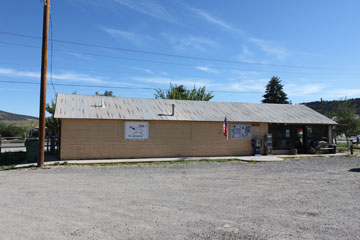
The museum is a not-for-profit organisation dedicated to preserving the history of railroading in Ouray County and surrounding areas.
It has adopted the name "Home of the Galloping Goose", as it was in Ridgway that these so-called motor cars were built by the RGS.
The museum's indoor display area includes artefacts, photographs, models, paper documents and tools related to the RGS and narrow gauge railroading in the area. There are photos of all the RGS Motors ("Galloping Geese"). The museum also has a collection of DVDs, videos, books and other documents.
There is a diorama with a model of "Galloping Goose" #2 crossing the Pleasant Valley Trestle (right). When you press a button, it activates the model, which moves forwards and then back across the trestle.
Outside, as well as a replica of "Galloping Goose" #1, there are several pieces of ex D&RGW rolling stock.
The equipment includes, below, DRGW Caboose #0575, DRGW Work Car #04914, DRGW Drop Bottom Gondola #702 and, lower photo, DRGW Box Car #3130 and DRGW Stock Car #5574 built by American Car and Foundry in St. Louis, MO, in 1904 and subsequently rebuilt by the D&RGW in Alamosa in 1926. It was written off by the D&RGW in 1970. Later sold to a Mr. Kinzie, it was bought by the museum in 1999.

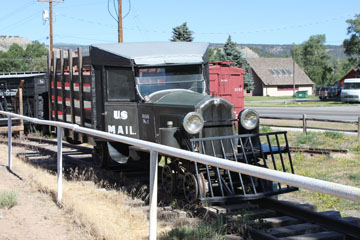
This is a replica of the first "Galloping Goose", the popular name given to a set of seven railcars built in the 1930s by the Rio Grande Southern. The replica was built by Karl Schaeffer in 2000.
The RGS had been running steam locomotives for passenger services, but there was not enough passenger or cargo income to justify continuing the service at then-current levels and the RGS developed the first "goose" as a means of staving off bankruptcy and keeping its contract to run mail to towns in the Rocky Mountains. The railroad officially classed them as "motors".
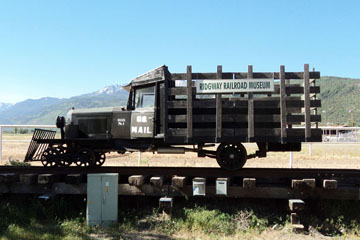
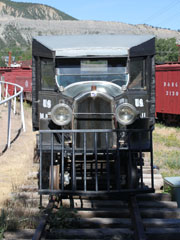
Steam trains carried heavy cargo and peak passenger loads, but "motors" handled lighter traffic. They were less expensive to run and much lighter, which reduced impact on rails and roadbeds. Cost savings meant the original #1, built in 1931, was paid off and making a profit within three weeks of going into service, and the "geese" operated until the company abandoned its right of way in 1952.
The original #1 was scrapped in 1933 and its parts were used to build #6. You can see #6 and more "geese" on the Colorado Railroad Museum page of this website.

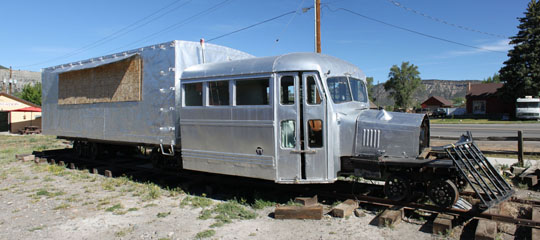

All the "geese" were built at the railroad's shops in Ridgway.
#4 was outshopped in May 1932 using a Pierce-Arrow 1926 body and Pierce-Arrow 33 engine at a total cost of $2,584.56. The entire unit weighs 14,950 lbs and is 43' 3" long.
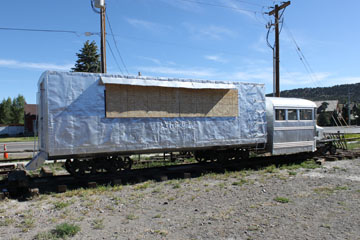
Like #1, shown earlier on this page, #4 was originally liveried dark green or, possibly, black.
#3, #4 and #5 were rebuilt in 1946 with military-surplus Wayne bus bodies. After losing its US
Mail contract, the RGS then converted #3, #4, #5 and #7 for passenger use in early 1950, hoping to capture a new tourist market. Seats from old Denver buses, long benches and snack bars were added creating capacity for thirty-two people. "The Galloping Goose" was painted on the sides of the motors, and also used in advertising along major highways.
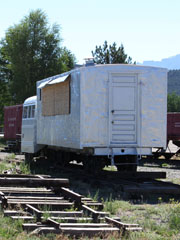
The passenger service lasted only two years, however, abandonment of the right of way was granted in 1952 and scrapping of the RGS began in 1953. #4 was one of the Geese that hauled away the rails they had run on. Soon after, it was sold to the City of Telluride, CO, and went on display next to the Fire House.
In 2009, the Ridgway Railroad Museum signed an agreement with the Telluride Volunteer Fire Dept., to restore #4 to operating condition. When we visited, it had been moved to the museum and quite a bit of work had been completed. It is the last "Goose" to be restored.

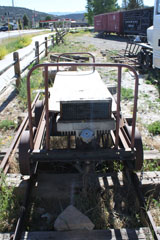
This inspection car was bought from an antique dealer and donated to the museum in 2005. It originally belonged to the Western Power Company and worked at one of the company's plants in Colorado, although it is similar to the type of speeders used on the Rio Grande Southern. It has a Fairmont single cylinder, two-cycle engine that has been rebuilt at some time in the past.
The museum has been gathering parts to make the drive belt and brake system to restore it to operation. It will then run on the museum's demonstration track along with "Galloping Goose" #1.


